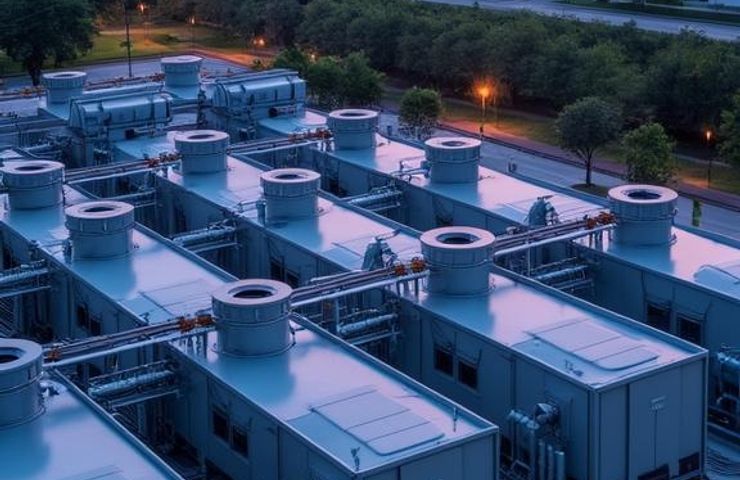
Fuel Cell Technology Powers Amazon’s Hilliard Data Center
October 21, 2025Amazon’s got a new data hub in Hilliard, Ohio, and they’re thinking big about power—installing up to 228 natural gas–fueled solid oxide fuel cell technology units right on-site. That roughly 73 MW of juice should take the heat off the local grid and keep Amazon Web Services (AWS) humming for one of the biggest cloud outfits out there.
Project at a Glance
In the filing with the City of Hilliard’s Planning & Zoning Commission, Amazon teams up with AEP Ohio and Bloom Energy. Here’s what they’ve got on the table:
- 228 solid oxide fuel cell modules
- About 73 MW of continuous output
- A natural gas reformer skid complete with piping
- An on-site control building and all the electrical tie-ins
Bottom line: dial back those creaky transmission lines, slash outage risk, and give AWS clients a rock-solid experience.
How the Fuel Cells Work
Forget combustion turbines—these solid oxide fuel cells turn chemical energy straight into DC power. Natural gas is reformed inside the unit into a hydrogen-rich mix, which then reacts with oxygen on ceramic electrolyte stacks. You still get water vapor and CO₂, but nitrogen oxides and soot? Way lower than your average generator.
Strategic Implications
For data centers, reliability is king. Even a tiny blip can mean lost data, angry customers, or SLA penalties. With on-site generation, Amazon wins on several fronts:
- Grid resilience: local power eases stress on the transmission network and cuts outage odds.
- Operational control: AWS schedules maintenance and fires up generation whenever it sees fit.
- Lower transmission losses: generating next to the load zaps those long-haul line losses.
But here’s the kicker: this locks AWS into fossil fuels for now, which raises questions about its broader sustainable energy goals. Amazon’s tinkered with green hydrogen pilots and other zero-carbon ideas, but they’re still in the test phase.
Community Concerns
Neighbors and city officials have already flagged a few red flags:
- Air quality: cleaner than old-school generators, yes—but these SOFCs still emit CO₂ on-site.
- Noise & safety: new emergency protocols and sound-dampening measures will be a must.
- Infrastructure equity: some worry private power projects like this could divert investment away from the public grid.
Now the Hilliard Planning & Zoning Commission is weighing those concerns against the potential perks: construction jobs and extra tax revenue.
Looking Ahead
Amazon’s move is part of a bigger shift: hyperscale data centers are diving into industrial decarbonization strategies that don’t just rely on grid upgrades. Will these natural gas–fueled fuel cell technology units be a stepping stone to full-scale hydrogen infrastructure and true hydrogen fuel cells, or end up as a long-term fossil fix? That’s still anyone’s guess.
As permitting rolls on, locals want transparency—clear emissions data, timelines for swapping in hydrogen-ready stacks, and solid decommissioning plans. Get it right, and Hilliard could set the playbook for other regions juggling booming digital demand and stressed electric systems.



 With over 15 years of reporting hydrogen news, we are your premier source for the latest updates and insights in hydrogen and renewable energy.
With over 15 years of reporting hydrogen news, we are your premier source for the latest updates and insights in hydrogen and renewable energy.